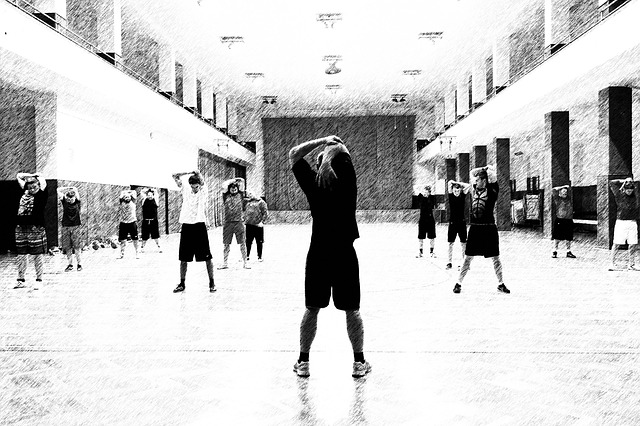Blog
Say Hello to Your Center of Gravity
It’s a hypothetical point…
…with serious implications for balance, stability and alignment. It is a force to be reckoned with- a force that can improve wellness and prevent injury if you know how to use it. But most people don’t even know where it is, or how to find it. That might be because it’s hypothetical- your center of gravity (COG) is the point at which your body’s combined mass is located. The line of gravity, on its way to the center of the earth, passes through your COG, which is an integral component of your body’s base of support. So the first step to harnessing the power of your COG is finding it- here’s how:
The Importance of Lower Limb Biomechanics in Sports Performance
Protecting our main form of movement
Walking is part of what makes us human, which is why so many of us take it for granted. But in reality, each step represents a complex biomechanical process that calls into play a chain reaction of nerve signals, muscle activation, joint articulation. On either end of each step, your body is attempting to define its position in space, maintain balance and stabilize the transfer of forces that results from movement. Now, if we are just going for a walk, this process barely registers. But if you are looking to improve your athletic performance, biomechanics is one of the best places to start. Lower limb biomechanics play a huge role in our success on the playing field, both in terms of improving performance and preventing injury. Let’s take a look at this concept in a little more depth.
The Almighty Warm-Up: Benefits for Your Body
Are you someone who skips the warm-up?
The warm-up is an essential component of exercise. We frequently meet patients who freely admit that they skip warming up 90% of the time. Whether out of sheer laziness, lack of awareness or know-how, these people are actually working against themselves- they are getting less out of their exercise and, in extreme scenarios, could be setting themselves up for injury and dysfunction. So why is the warm-up so important? Read on to find out.
Flexion Addresses the Muscular Imbalances That Threaten Your Spine
Why choose flexion?
Not everyone should. Especially people with severe back pain, herniated discs, or sciatica. Flexion, which refers to movements that bend the spine forward, can increase compression in the lower back. However, for certain conditions, flexion can actually help redress the systemic muscular imbalance and spinal misalignment that is making your life so uncomfortable. At Family Chiropractic & Natural Healing Center, we use flexion-based exercises to help people with the following problems:
- Anterior pelvic tilt
- Spinal misalignment
- Core instability
Excessive Standing Does Your Spine No Favors
Preventing the muscle fatigue that comes with excessive standing
If you stand in the same position all day, you are brutally aware of the fatigue and pain that comes with your job. The body actively dislikes any position that forces it to remain static- no matter how good your posture is, your body is still going to say no at a certain point. While sitting has gotten all the bad rap recently (and for good reason), standing still causes its fair share of spinal degeneration. A person with average-weight, standing with upright posture, is under about 100kg of downward pressure on their spine. If you are unable to change positions frequently, you really start to feel this compression:
- The bottoms of your feet become sore
- Your legs become achy
- Your lower back starts to ache
This is what eventually leads you to move- to stretch, to sit, to walk around. You simply can’t stand it anymore. Well we have an action plan for preventing this fatigue from taking a toll on your spinal health.
Yoga Offers the Daily Decompression Your Spine Needs
Yoga is a natural tonic for your spine
For people concerned with spinal health, yoga is one of the best things you can start doing on a daily basis. Yoga benefits anyone looking to maintain a high quality of life, but it is particularly effective when used to treat conditions related to the spine. So many activities in our daily lives increase the downward pressure on our bodies, causing compression to the spinal column that stresses the vertebrae, intravertebral discs and spinal facet joints. This compression is unlikely to abate, because it is caused by gravity. The best defense we have against this compression is:
- Good posture, so that we don’t drastically increase the pressure
- Modalities that provide decompression
Don’t Let Tension Define Your Life
Tension is always accumulating
At a certain point, doing nothing becomes not an option. Back pain, however mild or severe, is often the last symptom of systemic dysfunction. Tension in the surrounding musculature is always accumulating and we are very good at ignoring it. It’s why you can go years with vague tightness in the neck and shoulders, or months with non-specific lower back pain, without necessarily doing anything about it. As we ignore, this tension is pulling our spines out of alignment, devastating our posture and putting untold pressure on intervertebral discs. The degeneration that is likely to result will be painful which is why we always ask: why is the standard policy to ignore, ignore, ignore.
Start Retraining Your Spine Today
Are you training your spine into an unhealthy holding pattern?
The less we pay attention to posture, the more our spine suffers. It’s amazing how much damage is caused by sitting- in fact, it is more than damage. It contributes to a full-on restructuring of our musculoskeletal being-shortening certain muscles, letting others waste away from lack of use; all of this pulls our spine out of alignment and creates systemic tension that takes us down the road toward spinal pain and degeneration. So how do we start retraining our spines out of these horrible holding patterns? The answer starts in your very own home.
The Power of Pelvic Stability for Runners
Runners should think more critically about the pelvis
There are several joints that connect at this crucial junction between lower and upper body:
- The sacroiliac joint
- Iliofemeral joint, aka hip joint
- Pubic symphysis
True, all of these joints need to be able to move fully (they need full range of motion), in order for you to run effectively. But this movement must also be stabilized. Without stability in the pelvis, these joints are susceptible to excessive motion, and this is where the problems begin. Think about its location: the pelvis is at the base of the spine, meaning that if this region is sliding around uncontrollably, the rest of your body is destabilized. Spinal alignment is threatened and the forces being transferred from lower to upper body while you run wreak havoc.
Taking Your Neck Pain Seriously
A sore, stiff neck is not normal!
It is your body telling you that something is wrong- and most likely it is something to do with your lifestyle. The head is the heaviest single structure in your body, weighing between 10 and 12 pounds. In normal circumstances, this weight is being pressed downwards on the spine, creating a compression that strains intervertebral discs. The cervical spinal segment is the first section of spine to receive this compression, and the strain manifests itself in stiffness and neck pain. If you then add poor posture, like text neck, to the mix, you increase the amount of downward pressure that your head causes to your spine. Over time, cervical discs become more susceptible to this pressure and, if they succumb to it, conditions like herniated discs become a reality.









